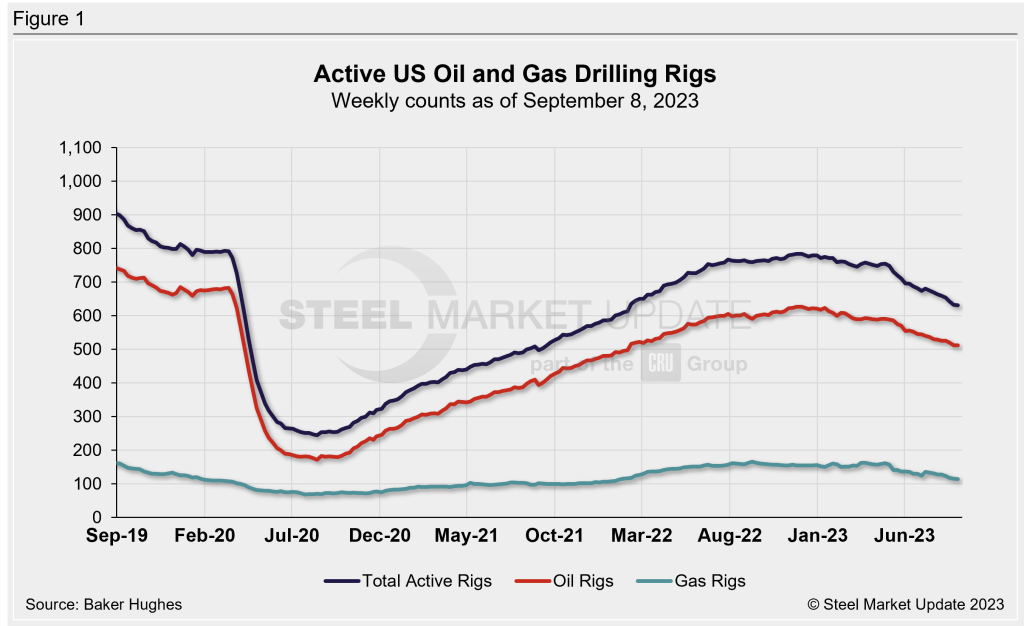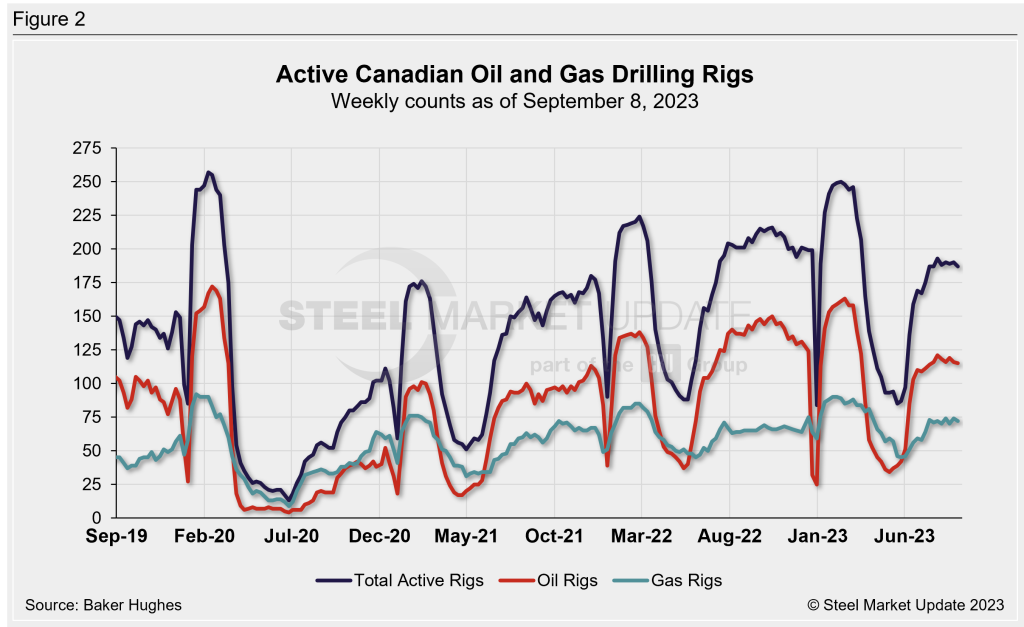OCTG
Rig Counts: US Rises While Canada Slides
Written by Becca Moczygemba
September 8, 2023
The US rotary rig count bounced back up this week, while Canada’s shifted down, according to the latest data from oilfield services company Baker Hughes.
Active rigs in the US moved back up to 632 as of Sept. 8, up by one from the previous week.
US oil rigs notched up one to 513 while gas rigs dropped by one to 113. Miscellaneous rigs bumped back up by one to six.
Compared to the same period one year ago, the US rig count is down by 127. Oil rigs are off by 78, and gas rigs are down 53. However, miscellaneous rigs are up by four, Baker Hughes said.

Canadian rigs are down by five week over week to 182. Oil rigs dropped by two to 113 and gas rigs fell by three to 69.
Year over year, active rigs in Canada are down by 23, with oil rigs down by 27 and gas rigs up by four.

The international rig count was down by nine from July to 952 rigs in August, but was up by 92 rigs from August 2022, Baker Hughes said.

The number of oil and gas rigs in operation is important to the steel industry as it is a leading indicator of demand for oil country tubular goods (OCTG), a key end-market for steel sheet.
A rotary rig is one that rotates the drill pipe from the surface to either drill a new well or to sidetrack an existing one. Wells are drilled to explore for, develop, and produce oil or natural gas. The Baker Hughes Rotary Rig count includes only those rigs that are significant consumers of oilfield services and supplies.
For a history of both the US and Canadian rig count, visit the Rig Count page on the Steel Market Update website here.

Becca Moczygemba
Read more from Becca MoczygembaLatest in OCTG

OCTG industry salutes Customs for catching trade crooks
The US OCTG Manufacturers Association is commending US Customs for intercepting another Thai company's attempt to illegally transship Chinese oil pipe to the US.

Drilling activity slows in the US, grows in Canada
Oil and gas drilling activity was mixed this week, according to Baker Hughes. US totals slipped for a sixth straight week, while Canada saw a slight bump in activity.

Commerce finds no Korean OCTG shipments below market value
US Department of Commerce (Commerce) review found no South Korean oil country tubular goods (OCTG) exporters or producers sold products below market value

Rig counts trend lower in US and Canada
Oil and gas drilling activity eased in both the US and Canada this week, according to Baker Hughes. US rig counts remain near multi-year lows, and Canadian activity continues its seasonal slowdown.

Oil and gas drilling pulls back considerably in Canada, steady in US
US rig counts remain slightly above multi-year lows, while Canadian activity is tapering off following a seasonal peak.
